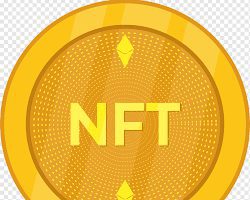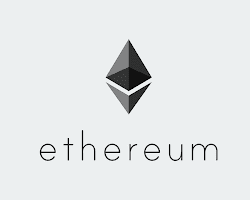How Has Ethereum Network Improved The Adoption Of Crypto Projects
The Ethereum network is a decentralized, open-source blockchain platform that enables the creation and execution of smart contracts and decentralized applications (dApps). It was proposed by Vitalik Buterin in late 2013 and launched in July 2015. Ethereum is designed to be a programmable blockchain, offering a platform for developers to build and deploy decentralized applications without the need for intermediaries.
The Ethereum network operates on a peer-to-peer basis, meaning that it doesn’t rely on a centralized authority or server. Instead, it relies on a global network of nodes that participate in the validation and verification of transactions and execution of smart contracts. Nodes are computers or devices running the Ethereum software, which communicate with each other to maintain the network’s integrity and reach consensus on the state of the blockchain.
At the core of the Ethereum network is its native cryptocurrency called Ether (ETH). Ether serves multiple purposes within the network. First and foremost, it acts as a digital currency that can be used to pay for transaction fees and incentivize participants to secure the network by mining or validating transactions. Additionally, Ether is used as “gas” to power smart contracts. Gas represents the computational cost required to execute operations within the Ethereum Virtual Machine (EVM), the runtime environment for smart contracts on the Ethereum network.
One of the key features that sets Ethereum apart from other blockchain platforms is its support for smart contracts. Smart contracts are self-executing agreements that are written in code and automatically enforce the terms and conditions defined within them. They enable the development of decentralized applications with built-in governance, transparency, and automation. Smart contracts on Ethereum are written in Solidity, a programming language specifically designed for the platform.
Ethereum’s smart contracts have opened up a wide range of possibilities for decentralized applications. They have been used for various purposes, including decentralized finance (DeFi), non-fungible tokens (NFTs), decentralized exchanges, supply chain management, voting systems, and more. These dApps leverage the transparent and secure nature of the Ethereum blockchain to provide innovative solutions and disrupt traditional centralized systems.
The Ethereum network underwent a significant upgrade known as Ethereum 2.0 or Eth2. This upgrade aims to address scalability and sustainability challenges faced by the network. Ethereum 2.0 introduces a new consensus mechanism called Proof of Stake (PoS), replacing the existing Proof of Work (PoW) mechanism. PoS allows users to “stake” their Ether to participate in the network’s consensus and earn rewards. This shift is expected to improve transaction throughput and reduce energy consumption.
In conclusion, the Ethereum network is a pioneering blockchain platform that revolutionized the concept of decentralized applications and smart contracts. It provides a decentralized infrastructure for developers to create innovative solutions, and its native cryptocurrency Ether serves as both a digital currency and the fuel for executing smart contracts. With ongoing upgrades and advancements, Ethereum continues to evolve, aiming to address scalability and sustainability concerns while further expanding its capabilities.
Also read: 10 Best Books To Learn About Ethereum To Understand Open- Source Blockchain
How Ethereum network and Crypto projects are related?
The Ethereum network and crypto projects are closely interconnected, as Ethereum serves as a foundational platform for the development and deployment of various crypto projects and tokens. Here’s a detailed explanation of their relationship:
1. Token Creation: Ethereum enables the creation and issuance of new tokens through its standard called the ERC-20 token standard. ERC-20 tokens are fungible digital assets that can represent anything from cryptocurrencies to utility tokens for specific platforms or projects. Many crypto projects choose to launch their tokens on the Ethereum network using the ERC-20 standard due to its established infrastructure and wide adoption.
2. Initial Coin Offerings (ICOs): ICOs became a popular fundraising method for crypto projects in the early days of Ethereum. During an ICO, a project sells its newly created tokens in exchange for Ethereum. Ethereum’s smart contract functionality makes it easy for projects to create and manage ICO campaigns, allowing them to raise funds directly from the community and investors.
3. Decentralized Finance (DeFi): Ethereum has become the primary platform for the booming DeFi ecosystem. DeFi refers to a set of decentralized financial applications that aim to recreate traditional financial instruments using smart contracts. These applications include decentralized exchanges (DEXs), lending and borrowing platforms, yield farming, stablecoins, and more. Ethereum’s programmability and support for smart contracts make it an ideal platform for developing complex DeFi protocols.
4. Non-Fungible Tokens (NFTs): NFTs are unique digital assets that can represent ownership of items like digital art, collectibles, virtual real estate, and more. Ethereum’s ERC-721 and ERC-1155 standards provide a framework for creating and managing NFTs. The Ethereum network has witnessed a significant surge in NFT projects, allowing creators to tokenize and sell their unique digital assets through decentralized marketplaces.
5. Interoperability and Cross-Chain Solutions: While Ethereum has been a dominant platform, other blockchains and crypto projects have emerged with their own unique features and functionalities. To address the need for interoperability and seamless communication between different blockchains, projects like Polkadot, Cosmos, and Chainlink have emerged. These projects enable cross-chain communication and provide bridges between Ethereum and other blockchain networks, enhancing the overall ecosystem and enabling collaboration between different crypto projects.
6. Ethereum Improvement Proposals (EIPs): Ethereum’s open-source nature allows developers and the community to propose and implement changes to the network through Ethereum Improvement Proposals (EIPs). EIPs can introduce new features, improve security, enhance scalability, or suggest modifications to the Ethereum protocol. The implementation of EIPs plays a crucial role in shaping the capabilities and functionality of the Ethereum network and its interaction with crypto projects.
In summary, the Ethereum network acts as a foundation for the development and growth of various crypto projects. It provides a robust and programmable platform for creating tokens, launching ICOs, powering DeFi applications, supporting NFTs, and facilitating interoperability with other blockchain networks. The Ethereum ecosystem continues to evolve, driven by the innovative ideas and projects that leverage its infrastructure and contribute to the broader crypto industry.
Also read: 10 Best Books To Learn About Ethereum To Understand Open- Source Blockchain
Top 10 ways Ethereum Network has Improved the Adoption of Crypto Projects:
Top 10 Ways Ethereum Network Has Improved the Adoption of Crypto Projects
Ethereum is the second-largest cryptocurrency by market capitalization, and it has played a major role in the adoption of blockchain technology. The Ethereum network has a number of features that make it well-suited for the development of decentralized applications, and these features have helped to attract a wide range of projects to the platform.
Here are the top 10 ways the Ethereum network has improved the adoption of crypto projects:
- Smart contracts: Ethereum’s smart contracts are self-executing contracts that can be used to automate a wide range of tasks. This makes it possible to build decentralized applications that are more efficient and secure than traditional applications.

- Decentralized finance (DeFi): DeFi is a financial ecosystem that is built on top of the Ethereum network. DeFi applications allow users to lend, borrow, trade, and invest their money without the need for a central authority.
- Non-fungible tokens (NFTs): NFTs are digital assets that are unique and cannot be replaced. They can be used to represent ownership of anything from art to collectibles to in-game items.

- Enterprise Ethereum: Enterprise Ethereum is a version of the Ethereum network that is designed for use by businesses. Enterprise Ethereum provides businesses with the benefits of Ethereum’s technology without the need to adopt the entire platform.
- Scalability: The Ethereum network is constantly being upgraded to improve its scalability. This means that the network can handle more transactions per second, which makes it more suitable for mainstream adoption.

- Security: The Ethereum network is one of the most secure blockchain networks in existence. This is due to the fact that the network is secured by a large number of nodes, which makes it very difficult to attack.
- Community: The Ethereum community is one of the most active and passionate communities in the blockchain space. This community has helped to promote the adoption of Ethereum and has made it a valuable resource for developers and businesses.

- Innovation: The Ethereum network is constantly being innovated. This means that the network is always evolving and adding new features. This makes it a platform that is well-suited for the development of new and innovative applications.
- Interoperability: The Ethereum network is interoperable with other blockchain networks. This means that it is possible to build applications that can interact with other blockchains. This interoperability makes it possible to create a more unified and interconnected blockchain ecosystem.

- Future potential: The Ethereum network has the potential to revolutionize a wide range of industries. This includes finance, healthcare, supply chain management, and many more. The future potential of Ethereum is one of the reasons why it has attracted so much adoption.
These are just some of the ways that the Ethereum network has improved the adoption of crypto projects. The Ethereum network is a powerful platform that has the potential to change the world. As the network continues to evolve, it is likely that it will continue to attract new projects and users.
Benefits of using Ethereum Network
The Ethereum network offers a wide range of benefits that have contributed to its popularity and widespread adoption. Here are the key advantages of using the Ethereum network:
1. Decentralization: Ethereum is a decentralized blockchain platform, meaning it operates without a central authority. The network is maintained by a global network of nodes, ensuring that no single entity has control over the platform. This decentralized nature provides transparency, security, and resilience to censorship or single-point-of-failure risks.
2. Smart Contract Functionality: Ethereum introduced the concept of smart contracts, which are self-executing agreements with the terms and conditions directly written into code. Smart contracts enable automation, transparency, and trust in various sectors, eliminating the need for intermediaries and reducing costs. They can be used for a wide range of applications, such as financial services, supply chain management, decentralized applications, and more.
3. Programmability: Ethereum’s programmable blockchain allows developers to create and deploy decentralized applications (dApps) using smart contracts. This flexibility provides developers with a powerful and expressive platform for building innovative solutions. The Ethereum Virtual Machine (EVM) executes smart contracts, ensuring their compatibility across different devices and environments.
4. Token Standardization: Ethereum introduced the ERC-20 token standard, which has become a widely adopted framework for creating and managing digital tokens. This standardization facilitates interoperability between different projects and exchanges, making it easier for tokens to be listed, traded, and integrated into various applications. ERC-20 tokens have played a significant role in crowdfunding, tokenization of assets, and creating economies within decentralized applications.
5. Robust Developer Community: Ethereum has a large and active developer community, which contributes to the ongoing development, improvement, and innovation of the network. The community actively collaborates, shares knowledge, and creates open-source tools and libraries that enhance the functionality and usability of the platform. This vibrant ecosystem fosters growth, fosters new projects, and provides resources for developers to learn and build on top of Ethereum.
6. Interoperability and Compatibility: Ethereum’s infrastructure supports interoperability between different applications and platforms within the Ethereum ecosystem. The network provides a standard interface for communication, allowing projects to interact with each other seamlessly. Additionally, Ethereum’s open standards and compatibility enable integration with external services and other blockchain networks through bridges and cross-chain solutions.
7. Decentralized Finance (DeFi) Ecosystem: Ethereum has become the foundation for the decentralized finance (DeFi) movement, which aims to recreate traditional financial systems without intermediaries. DeFi applications built on Ethereum enable users to access financial services such as lending, borrowing, decentralized exchanges, yield farming, and more. This emerging ecosystem offers users increased financial inclusivity, permissionless access, and potential for higher returns on investments.
8. Continuous Development and Upgrades: The Ethereum network undergoes continuous development and upgrades to address scalability, security, and sustainability challenges. Ethereum 2.0 (Eth2) is an ongoing upgrade that introduces a shift from the energy-intensive Proof of Work (PoW) consensus mechanism to the more energy-efficient Proof of Stake (PoS). This upgrade aims to improve the network’s scalability, reduce transaction costs, and increase security.
In conclusion, the Ethereum network provides numerous benefits, including decentralization, smart contract functionality, programmability, token standardization, a robust developer community, interoperability, and a thriving DeFi ecosystem. These advantages have propelled Ethereum to the forefront of blockchain technology, making it a versatile platform for building decentralized applications, issuing tokens, and fostering innovation across various industries.
Also read: Your Ultimate Guide To Ethereum RPC Nodes
Future of Ethereum Network and Crypto Projects
The future of the Ethereum network and crypto projects holds tremendous potential for innovation, growth, and mainstream adoption. Here’s a detailed exploration of what we can expect:
1. Ethereum 2.0 and Scalability: The Ethereum network is undergoing a major upgrade known as Ethereum 2.0 or Eth2. This upgrade aims to address the scalability limitations of the current Ethereum network by introducing the Proof of Stake (PoS) consensus mechanism. With Ethereum 2.0, the network will be able to process a significantly higher number of transactions per second, making it more scalable and efficient. This upgrade will unlock new possibilities for decentralized applications, token transfers, and mass adoption.
2. Enhanced Security and Sustainability: As Ethereum transitions to a PoS consensus mechanism, the network’s security will be enhanced. PoS allows users to secure the network by staking their Ether, reducing the reliance on energy-intensive mining activities. This shift not only improves the network’s energy efficiency but also reduces the risk of centralization and potential 51% attacks. Enhanced security and sustainability will make Ethereum more attractive to institutional investors and users concerned about the environmental impact of blockchain technology.
3. Interoperability and Cross-Chain Solutions: The blockchain ecosystem is expanding rapidly, with numerous blockchain networks and crypto projects emerging. Interoperability and cross-chain solutions will play a vital role in connecting these networks and facilitating the seamless transfer of assets and data. Ethereum’s compatibility with other blockchains, coupled with projects like Polkadot, Cosmos, and Chainlink, will enable cross-chain communication and collaboration. This interoperability will foster innovation, liquidity, and the integration of different blockchain ecosystems.
4. Decentralized Finance (DeFi) Maturation: DeFi has been one of the most significant success stories of the Ethereum network. The future of DeFi holds tremendous potential for growth and maturation. As Ethereum becomes more scalable and efficient, DeFi applications will be able to handle a higher volume of transactions, reduce gas fees, and offer a seamless user experience. We can expect the development of more sophisticated DeFi protocols, improved user interfaces, enhanced risk management mechanisms, and increased adoption from traditional financial institutions and mainstream users.
5. Non-Fungible Tokens (NFTs) Evolution: NFTs have gained significant attention and popularity, particularly in the digital art and collectibles space. The future of NFTs on Ethereum will likely see advancements in areas such as interoperability between different NFT platforms, improved marketplace experiences, enhanced standards for fractional ownership and secondary sales, and increased integration with real-world assets. NFTs could revolutionize industries such as gaming, virtual real estate, ticketing, and intellectual property rights.
6. Regulatory Framework and Mainstream Adoption: As the crypto industry continues to mature, regulatory frameworks are expected to evolve to provide clarity and protection for investors and users. Regulatory certainty can foster institutional adoption of cryptocurrencies and blockchain technology, driving increased liquidity and mainstream acceptance. With clearer regulations, more traditional financial institutions and corporations may explore integrating Ethereum and cryptocurrencies into their operations, leading to broader adoption and use cases.
7. Continued Innovation and Developer Activity: Ethereum has a vibrant and active developer community that constantly pushes the boundaries of what is possible. Developers will continue to innovate and build new applications, tools, and infrastructure on the Ethereum network. This ongoing activity will lead to the creation of novel use cases, improved user experiences, and increased accessibility for developers with diverse backgrounds.
In conclusion, the future of the Ethereum network and crypto projects is promising. Ethereum 2.0’s scalability upgrade, enhanced security, interoperability, and the maturation of DeFi and NFTs will drive increased adoption and innovation. As regulatory frameworks evolve and mainstream acceptance grows, Ethereum and crypto projects have the potential to reshape industries, revolutionize finance, and provide new avenues for decentralized applications and tokenized assets.
Stay informed with daily updates from Blockchain Magazine on Google News. Click here to follow us and mark as favorite: [Blockchain Magazine on Google News].
Get Blockchain Insights In Inbox
Stay ahead of the curve with expert analysis and market updates.
latest from tech
Disclaimer: Any post shared by a third-party agency are sponsored and Blockchain Magazine has no views on any such posts. The views and opinions expressed in this post are those of the clients and do not necessarily reflect the official policy or position of Blockchain Magazine. The information provided in this post is for informational purposes only and should not be considered as financial, investment, or professional advice. Blockchain Magazine does not endorse or promote any specific products, services, or companies mentioned in this posts. Readers are encouraged to conduct their own research and consult with a qualified professional before making any financial decisions. The featured image used is just a creative depiction of the title and it does not intend to hurt sentiments of any person or institution. If it hurts anyone sentiments, please do not hesitate to reach out to Blockchain Magazine.

 Bitcoin
Bitcoin  Ethereum
Ethereum  XRP
XRP  Tether
Tether  Solana
Solana  USDC
USDC  Dogecoin
Dogecoin  Cardano
Cardano  Lido Staked Ether
Lido Staked Ether  TRON
TRON  Wrapped Bitcoin
Wrapped Bitcoin  Chainlink
Chainlink  Wrapped stETH
Wrapped stETH  Sui
Sui  Avalanche
Avalanche  Stellar
Stellar  Hedera
Hedera  Toncoin
Toncoin  Shiba Inu
Shiba Inu  LEO Token
LEO Token  Hyperliquid
Hyperliquid  Bitget Token
Bitget Token  Litecoin
Litecoin  WETH
WETH  USDS
USDS  Polkadot
Polkadot  Bitcoin Cash
Bitcoin Cash  Ethena USDe
Ethena USDe  Wrapped eETH
Wrapped eETH  MANTRA
MANTRA  Uniswap
Uniswap  Pepe
Pepe  Ondo
Ondo  Aave
Aave  Monero
Monero  NEAR Protocol
NEAR Protocol  WhiteBIT Coin
WhiteBIT Coin  Mantle
Mantle  Official Trump
Official Trump  Aptos
Aptos  Dai
Dai  Internet Computer
Internet Computer  Ethereum Classic
Ethereum Classic  Bittensor
Bittensor  Cronos
Cronos  OKB
OKB  POL (ex-MATIC)
POL (ex-MATIC)  Gate
Gate 




